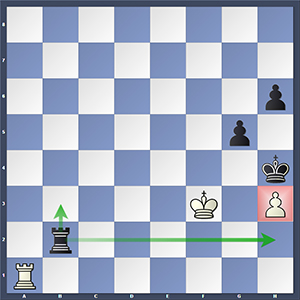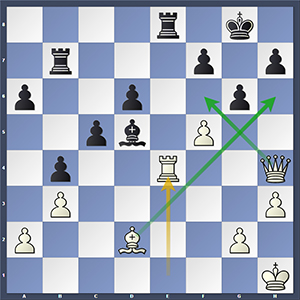
The penultimate round of the Tata Steel Chess Tournament 2017, was held in Wijk aan Zee, the Netherlands, on Saturday 28th January. With the tournament in its final throws, there were only a few possible outcomes when it came to the winners of the two main groups and the chess world waited to see if this round would make things any clearer.
The answer: not really.
In the Masters Group, Wesley So held onto the lead, the spot that he has owned since defeating Pavel Eljanov, (who had been leading the group), in round five. In this round, he drew with Yi Wei, who was just a half point behind So and with the potential to overtake him for the lead had he won the game, but this would not be a simple task as he would have the black pieces.
So opened with 1.Nf3, possibly in order to avoid Wei’s Petroff and this was a positive sign where the spectators were concerned as it appeared that So at least was in the mood to play. The game turned into a Queen’s Gambit Declined, but the Queen’s came off very early and other exchanges soon followed. Black will not have been unhappy with the situation, despite a messy pawn structure, but there was little potential for action. When the remaining minor pieces were exchanged, the situation was a rook ending in which neither player really had concerns or possibilities and the players split the point.
Elsewhere, another of So’s rivals, World Champion Magnus Carlsen, was doing somewhat better than Wei. Carlsen played the black pieces against Pavel Eljanov and opened with the Dutch Defence — quite appropriately considering the location. It didn’t really work out for Magnus, however, with Pavel obtaining the best of things out of the opening. Problematic for Carlsen was his knight, which had some problems achieving good play and his light-squared bishop was rather shut out of things on e8 at one point also. However, as he often does, Magnus quickly found activity and White found his advantage ebbing away, despite a passed d-pawn, which looked rather nice.
It was perhaps Eljanov’s over-eagerness to get the d-pawn moving which led to a change in the balance, 37.d6{?} was either impatience or delusion of grandeur. 38.Nf2 allowed Black to pick off the c-pawn and although White was ultimately able to advance his d-pawn to d7, it had no potential to go any further from there. It soon fell (well, was exchanged for Black’s b-pawn) but Black was then a pawn to the good. From here, Carlsen had the bit firmly between his teeth and was soon completely smothering Eljanov with his rook and extremely influential King. White was soon falling on his own sword. The diagram, below, shows Eljanov’s predicament in the final position, with no way to answer Carlsen’s threats.

The victory over Eljanov was quite the helping hand for Carlsen, who moved to within half a point of Wesley So going into the final round. He would not be alone there, however, with Yi Wei joining him thanks to his draw against So. Also present, would be Levon Aronian, who added to Loek van Wely’s poor tournament by taking the Dutch GM’s seventh point from him.
Van Wely will be very disappointed with the outcome in this game, in which he was by no means out-played as such, but was the maker of his own undoing. A lack of foresight allowed Aronian’s 24.Qf4 and 25.Qh4 after which Black was under pressure on the Kingside. Then, with White’s pawns swarming up the board, van Wely found his pieces completely misplaced, especially his Queen on e5, which was soon being sacrificed for knight, rook and pawn. Unfortunately, these pieces were inconsequential and White was left with a very dominant position.
With Black already up against it, the final blow came with White’s 32.Rxe4{!}, which is shown in the diagram, below. There followed: 32…Bxe4 33.Qf6 Bxg2+ 34.Kg1 and with no way to avoid Bh6 and then mate without heavy losses which would only delay matters, van Wely resigned.

With the remaining games drawn, things were very simple going into the final round — if Wesley So could defeat Ian Nepomniachtchi, he would be assured of sole victory. However, So would be Black. This would be some comfort to Magnus Carlsen, especially, who would have the White pieces against Sergey Karjakin and would have a little more potential for aggression if he wanted to keep up the pressure on the leader. As extra incentive for Carlsen, Levon Aronian would also have the black pieces, against Dmitry Andreikin.
Masters Group Standings after Round 12.
- So — 8.0
- Aronian, Carlsen, Wei — 7.5
- Adhiban, Karjakin, Eljanov — 6.5
- Harikrishna, Giri — 6.0
- Andreikin, Nepomniachtchi, Wojtaszek — 5.0
- Rapport — 4.5
- van Wely — 2.5
Masters Group Round 13, Sunday 29th January, 12:00 local time.
Andreikin – Aronian
Wei – Wojtaszek
Nepomniachtchi – So
Carlsen – Karjakin
Giri – Eljanov
Rapport – Adhiban
Van Wely – Harikrishna.
In the Challengers Group, there was again a lot of movement at the top as the leader going into round twelve, Jeffery Xiong, lost his game against Aryan Tari. Gawain Jones and Markus Ragger, meanwhile, did exactly what they needed to do and won their games, (against Vladimir Dobrov and Jorden van Foreest respectively), and this meant that they would leapfrog Xiong to share the lead by half a point. This would make for an exciting final round, with things very much up in the air in this extremely competitive group, with Ragger, Jones, Smirin and Xiong all potentially capable of taking victory.
Challengers Group Standings after Round 12.
- Ragger, Jones — 8.5
- Smirin, Xiong — 8.0
- Lu — 7.5
- Hansen — 7.0
- Tari, l’Ami, Grandelius — 6.5
- Bok — 5.0
- Dobrov, van Foreest, Lei — 3.5
- Guramishvili — 1.5
Challengers Group Round 13, Sunday 29th January, 12:00 local time.
van Foreest – Grandelius
l’Ami – Ragger
Xiong – Bok
Lei – Tari
Hansen – Smirin
Dobrov – Guramishvili
Lu – Jones.







